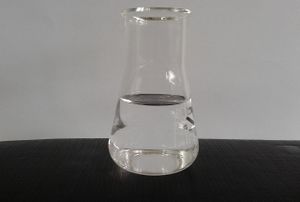Petroleum ether
Petroleum ether is a highly flammable liquid distillate of petroleum, heavier than naphtha and lighter than kerosene. It has many names, such as petroleum spirits, benzine (only in English-speaking parts of the world, as in many countries the term refers to gasoline), varnish makers & painters naphtha (VM&P), petroleum naphtha, naphtha ASTM. It is a lightweight hydrocarbon used chiefly as a nonpolar solvent.
Despite its name, petroleum ether is NOT an ether.
Contents
Properties
Chemical
Petroleum ether is a mixture of alkanes, such as pentane, hexane, and heptane. It is useful as a non-polar solvent in organic and organometallic synthesis.
Physical
Petroleum ether is a volatile clear colorless liquid, with a characteristic smell of alkanes. Being a non-polar liquid, it is immiscible with water, but miscible with many other solvents, such as acetone or ethanol. Depending on the composition, it has a specific gravity of 0.6 - 0.8, and the boiling interval varies, depending on the composition, the most common used petroleum ether has a boiling interval of 60 to 80 °C. It self-ignites at 288°C and its flash point is -18°C.
Availability
Petroleum ether is sometimes available as barbeque charcoal lighter fluid.
Some sticker removers also contain petroleum ether.[1]
Preparation
Petroleum ether can be prepared by mixing it's constituent alkanes in the specific ratio, although it's cheaper to just buy it.
Projects
- Solvent for organic and organometallic reactions
- Fuel
Handling
Safety
Petroleum ether is volatile and is irritant to lungs and eyes, as well as skin. It is however, far less dangerous and toxic than other non-polar solvents. Petroleum ether is volatile and poses a fire hazard.
Storage
Petroleum ether should be stored in closed bottles, in a cool, well-ventilated area, away from any heat, fire or spark sources.
Disposal
Petroleum ether can be burned without generating hazardous fumes.
